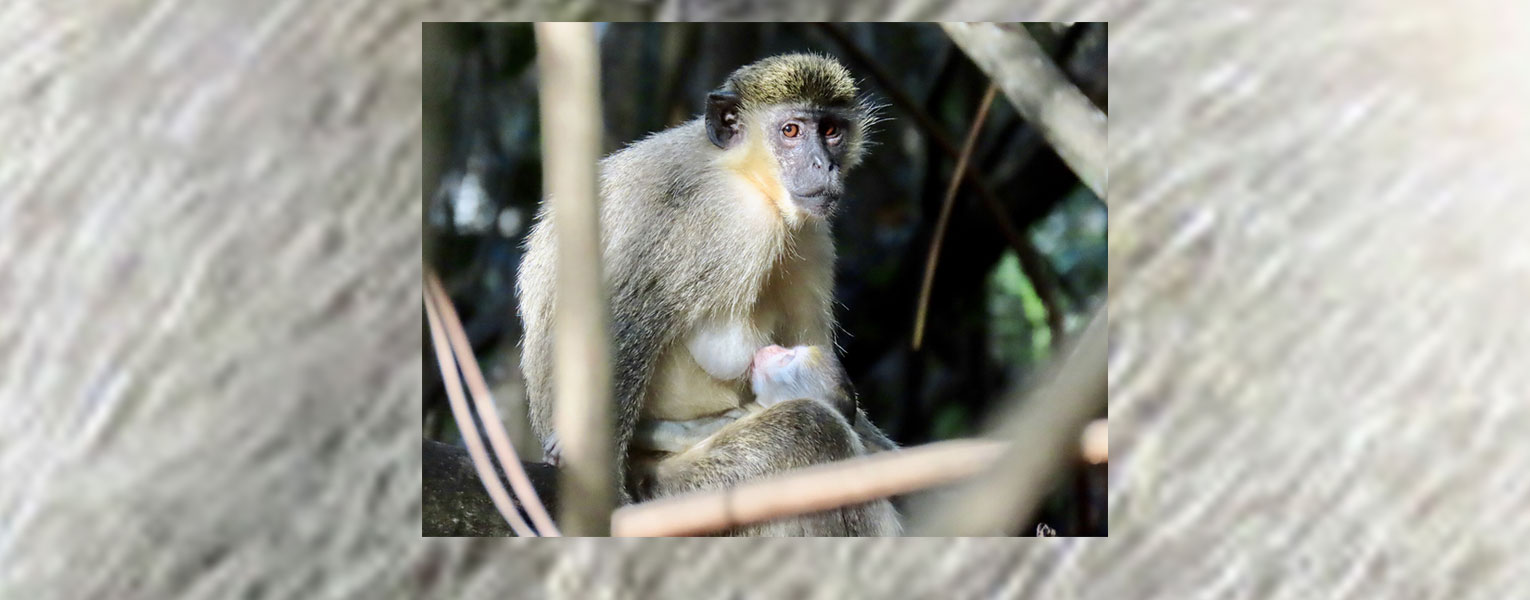1/18/2024
Art of Science: Third Place Winner
Graduate Student Captures Intimate Monkey Moment
By Bethany Augliere
For 70 years, a small colony of about 40 wild African vervet monkeys have lived in the mangroves next to Fort Lauderdale’s international airport, descended from a group that escaped from the Dania Chimpanzee Farm in 1948. Interested in animal behavior, Aaron Mencia, a graduate student in the Charles E. Schmidt College of Science, studies how the monkeys’ siblings, aunts and grandmothers are all involved in caregiving for the colony’s babies.
One of Mencia’s pictures of a monkey mother breastfeeding a baby monkey recently earned third place in the 2023 Art of Science photography and video contests.
Mencia said the contest serves as an avenue to educate people about these monkeys and their plight. “When scientists and conservationists talk to people outside of the science realm, it's really important to use photos as a guide to help people understand why we do what we do,” Mencia said. Research helps gain insight into behavior, which is necessary to understand how to best protect a population, he added.
The monkeys may not be native to Florida, but they are not invasive, like animals such as the Burmese python or lionfish that wreak havoc on the local ecosystem, he said. “They are sentient beings that were not put here by their own choice and they're really just trying to survive out in the forest now,” he said.
To study the primates, Mencia works with the Dania Beach Vervet Project and his graduate advisor, Kate Detweiler, Ph.D., associate professor in the Dorothy F. Schmidt College of Arts and Letters. The goal is to promote conservation, awareness and education about the local free-ranging vervet monkeys in Dania Beach. To track and study the individuals, the scientists and volunteers photograph the animals to create a database of all individuals. The mother monkey in Mencia’s image is a female named Amy, with her baby boy, Higgins.
In the wild, this species of vervet monkey is found in West Africa, with a range from Senegal and west Guinea-Bissau into Ghana. They are the most widespread of the African monkeys and are habitat generalists, limited only by the availability of water and sleeping trees. Here in South Florida, the small population faces threats from human activity, like car strikes, electrocution in powerlines and being stolen illegally for the pet trade, Mencia said.
Mencia grew up in Miami and has always loved animals. He’s traveled around the world to study primates, from Puerto Rico to Costa Rica and South Africa. Additionally, he currently works at Zoo Miami as an educator leading camp groups ages 6-11 through the zoo teaching species identification, diversity and conservation, as well as engaging with the public on learning about and creating enrichments for animals housed at the zoo.
Through Mencia’s research with the vervet monkeys, he said he is able to recognize their unique personalities. Some are shy, some are troublemakers, some are just lazy and sleepy, he said. And there’s always lots of drama. “It's better drama than a Kardashian episode,” he joked. But more importantly, he said, photography and showing the more human aspects of an animal can help people to relate to them. “When you start relating to something you care about it.”
If you would like more information, please contact us at dorcommunications@fau.edu.
If You Go …
Join us for the kickoff celebration of this year’s monthlong Art of Science gallery exhibition.What: Art of Science Opening Night
When: Thursday, Jan. 25
Time: 4 to 6 p.m.
Where: Schmidt Center Gallery, Boca Raton campus
Register here.
